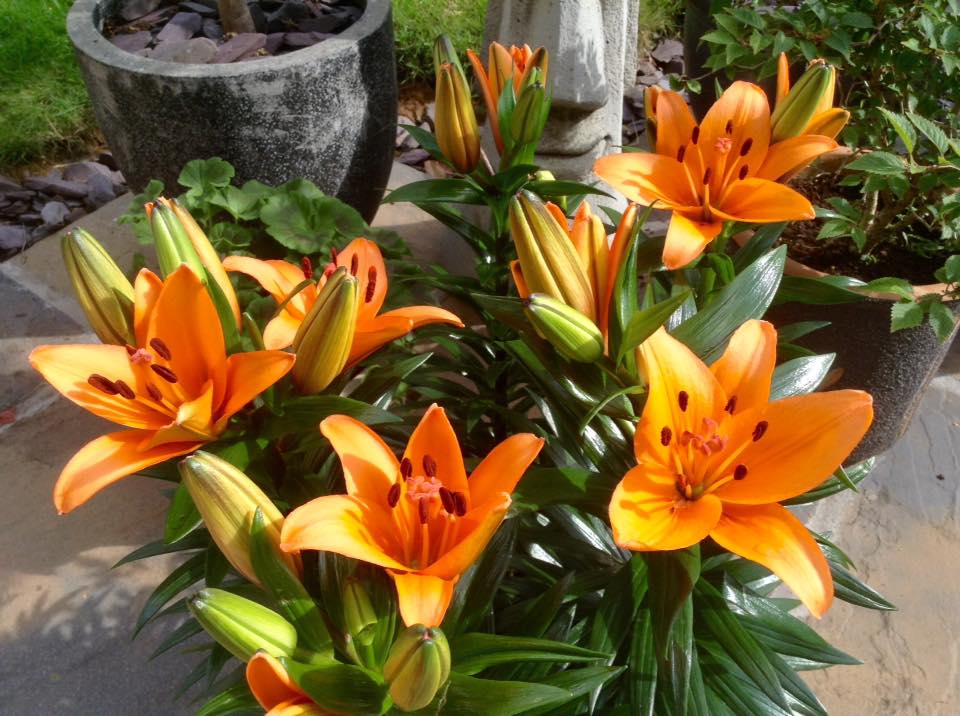Stunning summer bulbs to plant in spring
If you are one of those people who missed putting in your spring bulbs last September, now is the time to think about giving summer bulbs a go.
Bulbs, corms and tubers can be planted in spring right up until the end of May and can be as spectacular as their spring counterparts – in troughs and tubs, or filling up the front of beds and borders – requiring little maintenance but providing a wealth of colour during the hotter months.
The majority produce their best blooms when planted in a sunny spot, although lilies and begonias bloom well in partial shade. There are many to choose from; here’s some ideas and key points to keep in mind…
Long, short and tall
Hyacinths are generally known as highly-scented spring bulbs, but there is also a summer hyacinth, Galtonia candicans, which grows to 1m (3ft) high and makes big clumps of strap-like leaves, producing white, bell-shaped flowers in summer. They should be planted in late spring.
Long after your tulips have faded, foxtail lilies (Eremurus species) are producing towering spires of flowers as high as 3m (9ft), clumps of Crinum x powellii are producing beautiful pink blooms, while in August and September red hot pokers (Kniphofias) are among the most impressive border plants.
The pineapple flower (Eucomis bicolor), grows to 60cm (2ft) and provides a tropical effect for a sunny border or container, its leaves forming a wide, funnel shape and its fruit, which looks like an under-ripe pineapple, emerges in mid-summer. The bulbs should be planted in late spring, April to May, at least 20cm deep to protect them from frost.
They prefer a sunny, sheltered spot and will need a good dry mulch come the autumn. Those in containers will benefit from being brought under cover into a cool, frost-free place.
Luscious lilies

Lilium longiflorum
Lilies are among the most popular summer bulbs. They perform well in pots and if you want their rich scent to pervade your patio, go for L. longiflorum, which will produce wonderful white flowers and fragrance on a sunny terrace.
They are best grown in large pots of John Innes compost in autumn or early spring, in a frost-free greenhouse or conservatory. Don’t put them outside until the frosts have passed.

Tiger lilies provide fantastic colour
One of the easiest lilies to grow is the tiger lily (Lilium tigrinum), which grows to 1.25m (4ft) and produces striking orange-spotted flowers with petals which curve in to make a ball shape. Again, they can be planted in early spring in lime-free soil, which is well-drained.
They flower in mid to late summer and combine well with other hot-coloured perennials such as cannas and crocosmias.
The plants can be left for a couple of years until they start to become overcrowded, and then clumps can be dug up and divided in autumn or early spring and replanted immediately.
Late-bloomers
Some bulbs will flower well into late summer. Nerines, for instance, look wonderful in pots and produce lily-like flowers in a variety of colours in the autumn, as the leaves die down. Try N. flexuosa ‘Alba’ for a splash of white in a terracotta pot on a terrace in autumn.
Hardy bulbs like nerines, galtonia and Amaryllis belladonna can be planted in spring and left to naturalise in a warm, sunny spot.
Non-hardy types such as tigridia, canna and eucomis should be planted in late spring and lifted after flowering, before the first frost.
The Kaffir lily (Schizostylis coccinea ‘Sunrise’) is also a wonderful addition to the late summer garden, with its star-like pink blooms emerging on slender stems in August and September.
Fiery crocosmias
Crocosmias, formerly known as montbretias, with their hot colours from yellow through to burnt orange and fiery reds, look their best in high summer and can continue to flower well into September.
Planting pointers

Lily bulbs ready for planting
Remember when planting that nearly all bulbs require free-draining soil. If your soil is heavy, put sand or grit in the hole under the bulb.
The hole should be about twice the diameter of the bulb and the depth will depend up on the variety you are planting.
Before you know it, summer will be here with a riot of colour from all those bulbs you planted in spring.
The Press Association
Latest posts by The Press Association (see all)
- 3 easy Mary Berry recipes to make this season - November 22, 2024
- In Pictures: Party stalwart kept New Labour in touch with traditional supporters - November 21, 2024
- 6 easy indoor exercises to try this winter – and why they are good for you - November 19, 2024
- Martin Clunes: I can’t afford to retire – I’ve got too many horses - November 19, 2024
- How to avoid plant losses, flowering disappointments and container catastrophes - November 17, 2024





















